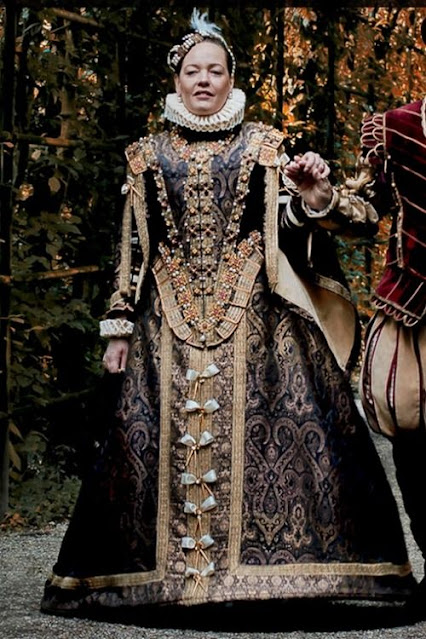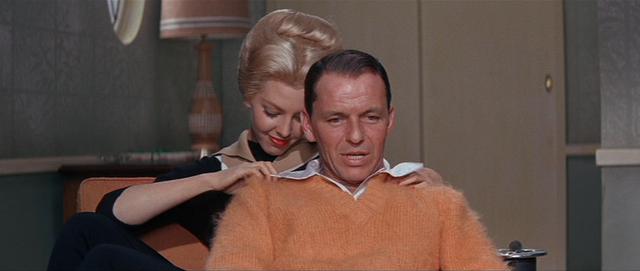----------ooOoo----------
The word "orange" derives from the Arabic naranj and arrived in English as "narange" in the 14th century, gradually losing the initial "n". Orange was first used as the name for a color in 1542.
----------ooOoo----------
There are almost no perfect rhymes with orange. There is only one word in the 20-volume historical Oxford English Dictionary that rhymes with orange, and it is sporange, a very rare alternative form of sporangium (a botanical term for a sac where spores are made). There is also a mountain in Wales called Blorenge.
As I was thinking while eating my orange,
About climbing to the top of Mount Blorenge.
Not because it’s there
But that it might be where
I could get my hands on some sporange.
Blorenge Mountain, Wales.
----------ooOoo----------
Oranges as a fruit are a hybrid of tangerines and pomelos, also known as "Chinese grapefruit," and they were originally green, not orange.
Oranges are a subtropical fruit, but now that they exist in more temperate climates, they lose their chlorophyll-induced green and become their more familiar color when the weather warms up.
The color of an orange depends on where it grows. In more temperate climes, its green skin turns orange when the weather cools; but in countries where it's always hot, the chlorophyll is preserved and the fruit stays green.
Vietnamese oranges and Thai tangerines are still bright green on the outside and orange inside.
Asian green oranges
----------ooOoo----------
Orange was a symbol of glory and fruits of the earth in the early Christian church.
----------ooOoo----------
In Feng Shui orange is known as the “social color” because it helps draw people together and encourages conversation. It is a popular choice for kitchens, dining rooms, and even in restaurants to help activate appetite. Orange is a less intense color than red, so people sometimes like to use it in the bedroom to promote love and drawing or strengthening a romantic relationship. In Feng Shui and in colour therapy, orange is used to overcome abuse, shock, and depression.
----------ooOoo----------
In the Elizabethan era, the brightest colours demanded a higher price tag and were only available to the upper class. The brightness of the colour and its richness were the determining factors as to how expensive it would be.
Elizabethan clothing was a part of the social order. It was also indicative of a particular person’s status not only reflecting how wealthy or poor they are but also of their social reputation. The Elizabethan era clothing materials varied according to social status. The upper class of Elizabethan England wore elegant and luxurious clothing that was made of expensive velvet, exotic silk and satin. Only the members of the Royal Family were allowed to own robes which were trimmed with ermine. Less noble folk wore clothing trimmed with either fox or otter.
The dyes that were used to colour the lavish clothing of the noble of Elizabethan England cost a lot. In one of Elizabeth I’s surviving portraits, she was shown wearing a crimson robe. The deep crimson colouring was obtained from an insect which was only found in the Mediterranean.
The working class or peasants wore clothes dyed in yellow, orange, green, pale blue, pink and russet.
Middle class clothing:
Peasant clothing:
Upper class clothing:
----------ooOoo----------
Orange is often biblically associated with saints and represents strength and courage.
Orange is obtained by mixing red (flesh) and yellow (trials). The result is a color of fire which represents the Fire of God, deliverance and passionate praise.
----------ooOoo----------
The first operator in Europe to commit to pushing Near Field Communication (NFC) across its territories was the mobile network giant Orange. Orange’s well-known slogan was “the futures bright, the futures orange”.
From the past, a variation . . .
----------ooOoo----------
An orange vehicle apparently says you are a fun loving and trendy person.
----------ooOoo----------
Frank Sinatra had a love for the color orange, once saying “Orange is the happiest of colors.”
----------ooOoo----------
The national colour of the Netherlands is orange.
It refers to the family name of the Dutch Royal Family, the House of Orange-Nassau. Their ancestor, William of Orange, is the founding father of the Netherlands. Orange symbolises national unity, the Dutch signifying their national pride by wearing orange.
William of Orange
The Netherlands soccer team, or ‘Oranje’, play in orange kits.
Oranje team
The Oranje Squad, Dutch soccer team supporters
----------ooOoo----------
In 1688 King James fled England after William of Orange attacked England at the invitation of English nobles and clergy to depose James. The latter escaped and spent the rest of his life in exile in France. William’s ousting of James II ensured that the Protestant faith in Britain was firmly entrenched. His decisive victory over James at the battle of the Boyne is still celebrated annually in Northern Ireland, with the Orange Order marches.
----------ooOoo----------
The Royal House of Orange was installed when William and Mary were crowned joint Monarchs of England, Scotland and Ireland in 1689, marking an important transition towards parliamentary rule as we know it today.
----------ooOoo----------
Originally carrots weren’t orange; the most common color was purple. The orange variety came about by the 17th Century when Dutch growers seemingly crossbred white rooted, mutated yellow and wild carrots.
----------ooOoo----------
Every 25th day of the month is known as “Orange Day” by the UN’s campaign called UNiTE to End Violence against Women. The day is to raise awareness and act to stop violence against women.
----------ooOoo----------
Gallery:
----------ooOoo----------



























No comments:
Post a Comment
Note: Only a member of this blog may post a comment.